2008 Saturn Vue Red Line – Click above for high-res image gallery
The introduction of the 2008 Saturn Vue is the latest element of the Saturn's ongoing product overhaul. In the wake of the Sky, Aura, and Outlook, we had high expectations for the all-new Vue. Gone are the outgoing model's clunky styling, cheesy faux grille, plastacular body panels and ho-hum street presence. In its place, we're given a smart-looking, well-packaged Opel Antara clone that's positioned as an obvious step up from its predecessor. Sure, the old Vue had some things going for it -- after its last facelift it had a decent-looking interior, and despite its outward visual shortcomings, it offered plenty of useful cargo room -- but it just wasn't very exciting in the grand scheme of things. Its departure is decidedly unlamented, and we eagerly accepted the keys when GM entrusted us with a spanking-new Vue Red Line for a week. Read on to see how well the newest Saturn lives up to the hype.
All photos Copyright ©2007 Alex Núñez / Weblogs, Inc.
I'd been seeing the new-gen Vues on the road for a few weeks ahead of our tester's arrival, and for some reason was working under the assumption that I would be testing the Vue XR. When I walked out to take delivery, I'll admit to being pleasantly surprised to see the Vue Red Line. That colorful moniker, for those of you still not familiar with the Saturn nomenclature, indicates a sport/performance-based model. The Vue Red Line joins the Sky Red Line in the brand's sporty roster, but unlike the turbo Sky, which is much more powerful and offers a radically different driving experience than its standard-grade counterpart, the Vue Red Line has a lot more in common with its XR-grade stablemate.
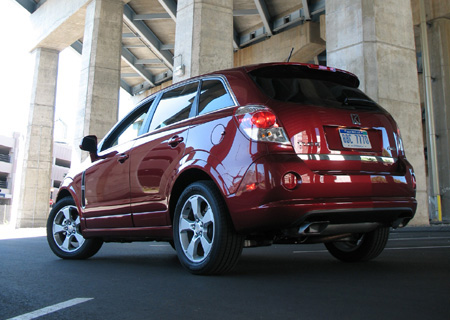
The two share GM's increasingly commonplace (this is a good thing) 3.6L VVT V6 (257 hp/248 lb-ft in this application) and 6T70 6-speed automatic transmission, with the Red Line adding as standard equipment the Tapshift feature that allows the driver to change gears manually. In our case, the tranny delivered power to all four corners thanks to the available AWD option. The Red Line adopts a more athletic stance, sitting nearly an inch lower than the XR, and also has differently-tuned shocks and struts, different spring rates, and unique bushings and stabilizer bars.
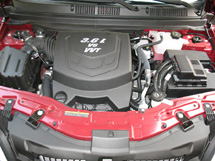
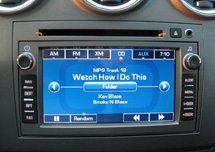
The Red Line-specific appearance package augments the lowered look with a comprehensive visual upgrade. A unique, super-aggressive front fascia is the Red Line's calling card, and makes it unmistakable next to its more sedate kin. The horizontal slats of the standard Vue's grillework are replaced by a sportier-looking diamond mesh pattern. The look is repeated on the gaping, love-it-or-hate-it lower opening. It's substantial enough that no one would hold it against you if you looked for an intercooler behind it, but your search would be fruitless. It's flanked by a set of foglamps, and if you move to the side, smooth rocker panels span the distance between the Red Line's 18" five-spoke alloys. Up top, low-profile roof rails are in line with the vehicle's sporty market positioning, while out back, a roof-mounted spoiler, model-specific taillamp treatment and trapezoidal exhaust tips peeking under a black bumper insert complete the appearance package. Like all other Vues, large side vents sit aft of the front wheels, adding a dash of style (if not function) and integrating the side marker lights quite nicely.
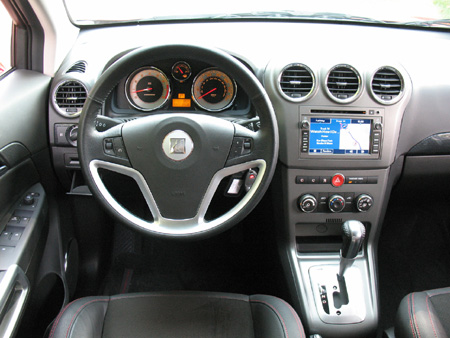
After clambering into the driver's seat, a pull on the metallic-trimmed handle closes the door with a satisfying thud that was conspicuously absent in the previous-gen Vue. There's much to like about the interior you find yourself in. Model-exclusive elements include the Ebony color theme, white-faced instruments, floor mats embroidered with the Red Line logo, and black leather seats with suede inserts and red contrast stitching. I've seen that type of seating material combo in more expensive GM cars - V-Series Cadillacs, for example -- and it's a welcome sight in the less costly Vue. The rest of the cabin stacks up well, too. Quality, good-looking, good-feeling plastics are the norm. Round HVAC vents with metallic bezels sit atop the uncluttered center stack. Below them, the stereo's on top, the heater controls take the middle position, and a small storage cubby trims out the bottom, which merges into the console between the front seats. There, you'll find the leather-topped shifter, a pair of cupholders, and a dual-level storage bin. The latter brings me to a point: these are better materials than used in the Aura (a car I like a lot), whose center bin is topped by a cheapo lid held closed by a latch that seemingly came out of a Cracker Jack box. Not so in the Vue, where everything feels solid, whether it's the storage bin's latch or the sturdy "click" the stalks hanging off the steering column make when you engage them. The multifunction steering wheel is a different unit than we'd become accustomed to finding in GM vehicles. It neatly integrates audio and cruise controls, is attractive to look at, and is comfortable in hand.
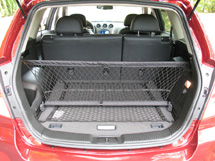
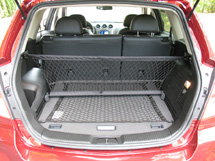
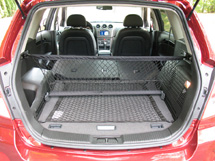
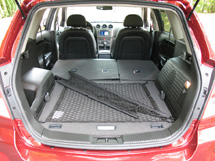
A look at the spec sheet reveals that the new Vue loses some cargo space compared to its boxier predecessor. Capacity with the rear seats folded flat is 56.4 cubic feet compared to the outgoing model's 63.8. With the second row seats in place, the cargo volume behind them is 29.2 cubic feet (the last Vue's was 30.8). The rear wheel wells seem to intrude more than they did on the outgoing model, but the available room is still more than enough for the usual grocery shopping trips and other day-to-day hauling needs. The '08 model also offers a nifty adjustable net that lets you manage that area in back quite nicely. Bi-level tracks are mounted on either side of the cargo area, and the spring-loaded net easily pops into the adjustable guides. If you need to access the spare tire, be advised -- you'll have to remove both the net and its adjustable mounts to do so. The spare and related tools are topped by a molded styrofoam cover that requires some effort to remove, which could give some drivers a bit of a hard time.
By now, you're probably wondering how the new Vue drives, so let's get right into it. The 3.6L V6's 257 horses move the SUV around ably if not exactly briskly for what's supposed to be the range's performance model. In AWD trim, the Red Line tips the scales at over 4,300 pounds, so there's quite a bit for the engine to haul around. EPA fuel economy is stated to be 16 city/22highway, and we observed 17 and change over the week in the usual mix of miserable traffic and local driving. You know the deal: your results may vary. Using Autoblog's patented and highly-sophisticated seat-of-the-pants/"One Mississippi...Two Mississippi" performance measurement tools on a long entrance ramp, I figured that the Red Line runs to sixty in 8 seconds or so. A quick call to our friends at Consumer Reports verified the number, as they recorded an 8.2 second time on their test track with the AWD XR they bought for their fleet. While the Tapshift feature was available, for the most part, the transmission selector in our tester was simply left in drive. The Vue's not the kind of car that begs to be shifted manually, anyway, and in truth, doing so wasn't a whole lot of fun. Towing capacity with this drivetrain combo is 3,500 pounds.
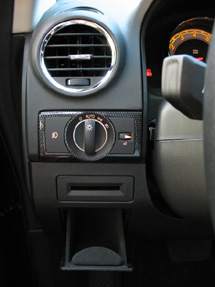
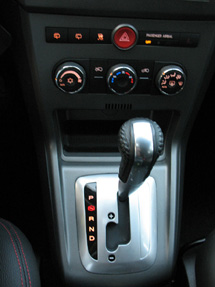
On the highway, the little SUV is stable at speed and has plenty of midrange punch on tap for when passing situations arise. The Red Line-spec suspension keeps body roll at a manageable level, though from the driver's perch, a little more lateral support from the fancy-looking front seats would be welcomed. Beyond that, there's not much to complain about. Back-seaters are offered a reclining backrest and have a pair of cupholders that pop out of the rear end of the floor console. Overall ride and comfort is good both in town and on the interstate.
All the controls are easy to use when underway, and our tester's 10-speaker, 180-watt premium audio system (AM/FM/XM/CD/MP3) with navigation sounded great. The nav system can only be configured when stopped, however, as GM's pre-installed nannyware restricts inputs while driving. We totally "get" this from the driver distraction standpoint, but it can be frustrating when you have a passenger up front who can handle those duties safely on the driver's behalf. A Bluetooth option with the primo stereo would be nice, too, but we wonder if that's viewed by GM as a competitor to OnStar. (It shouldn't be.) Finally, in addition to the aforementioned center storage bin, you get a substantial glovebox, a drawer under the front passenger seat, a closeable compartment for small items (loose change, etc) to the left of the steering wheel, and a card slot for parking passes and/or tickets above that.
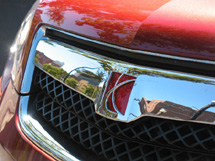
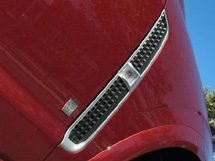
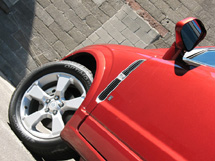
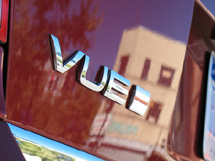
In summary, the 2008 Saturn Vue Red Line is an impressive addition to Saturn's product lineup. Our loaner came in at an as-tested price of $31,865 including a $625 destination charge. The only options it was equipped with were navigation ($2,145) and the advanced audio system ($350). It's leaps and bounds better than the vehicle it replaces, with eye-catching styling that drew a number of complements, a great-looking, usable interior, a comfortable ride, and a competent powertrain. Then again, the extremely similar Vue XR can be described exactly the same way, and like the Red Line, it too can be pushed over the $30K mark when optioned up. So, it comes down to personal preference. Pick up the Red Line if you like its more aggressive, sporty look, and go for the XR if you want the same powertrain in a more traditional SUV package. We wish that the Red Line was a little more than an appearance and trim package with some suspension tuning, but that didn't diminish our enjoyment behind the wheel. General, if you're reading, the more powerful, direct-injected version of the 3.6L V6 would be just the thing to give the Vue Red Line the bite to match its visual bark.
All photos Copyright ©2007 Alex Núñez / Weblogs, Inc.
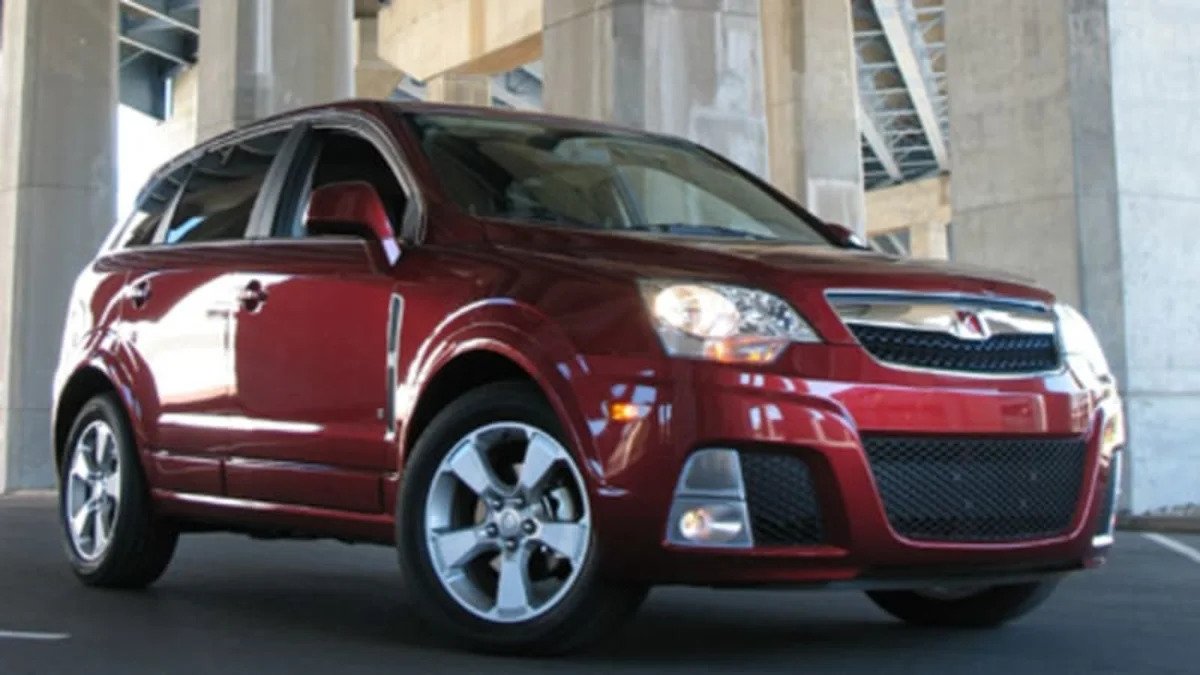


Sign in to post
Please sign in to leave a comment.
Continue